6 Best YA Books of Summer 2016
It’s old news by now that readers of all ages are unabashedly enjoying books aimed at young adults. Arguments can be made over whether this means more adults are reading or more adults just can’t relate to books aimed at adults. However you interpret it, the one thing that can be agreed upon is that the popularity of YA is good for libraries. They fly off the shelves. So, for librarians—and readers of all ages—here are six new YA books from our Summer 2016 issue to add to your collection.
The Jaguar and the Cacao Tree
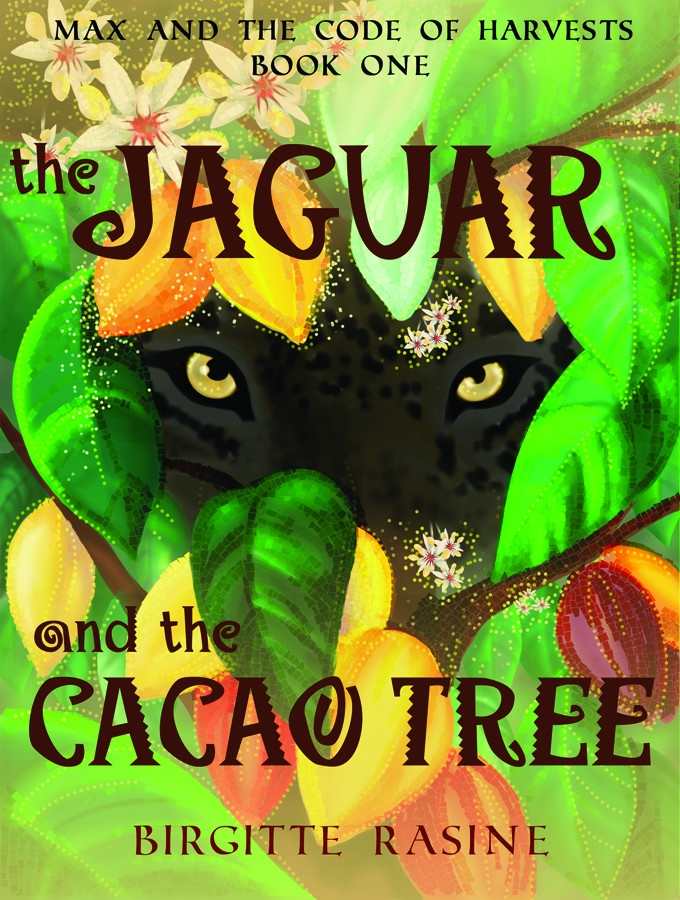
Birgitte Rasine
LUCITA Publishing
Softcover $11.99 (332pp)
978-1-938284-92-2
Czech American author and producer Birgitte Rasine has previously written literary novellas and nonfiction, but The Jaguar and the Cacao Tree marks her middle-grade fiction debut. Mayan prehistory intersects with nature preservation and even gastronomy in a dreamy, mystical story line. Eleven-year-old Max Hammond accompanies his parents to Guatemala, where his father, a bee researcher, will be shadowing Mayan beekeepers. Max excitedly starts learning Spanish and soon makes a new friend, twelve-year-old Itzel, the daughter of head beekeeper Don Francisco.
Together Max and Itzel explore the nearby cacao grove and delve into Mayan legends about Lord Thirteen Jaguar and the Sacred Cacao Tree. “No living thing is alone,” Max learns; everything is connected in the web of life. The possibility of magic is everywhere, too: Max meets a hummingbird that communicates with him through his thoughts. After he and Itzel enact a ritual blessing on the Sacred Cacao Tree, the pods split open and their pollen realigns to form secret maps of chocolate trade routes. Rasine thereby transforms what could have been a dry lesson about food production into a gleeful treasure hunt.
As Max’s mother explores with a chocolatier friend the possibility to obtain Guatemalan cacao, the real and legendary worlds start to blend, such that something going awry at the Sacred Cacao Tree might affect worldwide chocolate supply.
Lyrical descriptions of nature proliferate alongside the book’s winsome illustrations, and passages in Spanish or Mayan are accompanied by italicized translations. Readers can learn snippets of language and history while simultaneously being entertained by Max’s mystical rainforest adventures.
This is Book One of “Max and the Code of Harvests,” a series aimed at helping young people understand where food comes from.
REBECCA FOSTER (May 27, 2016)
Kaboom!
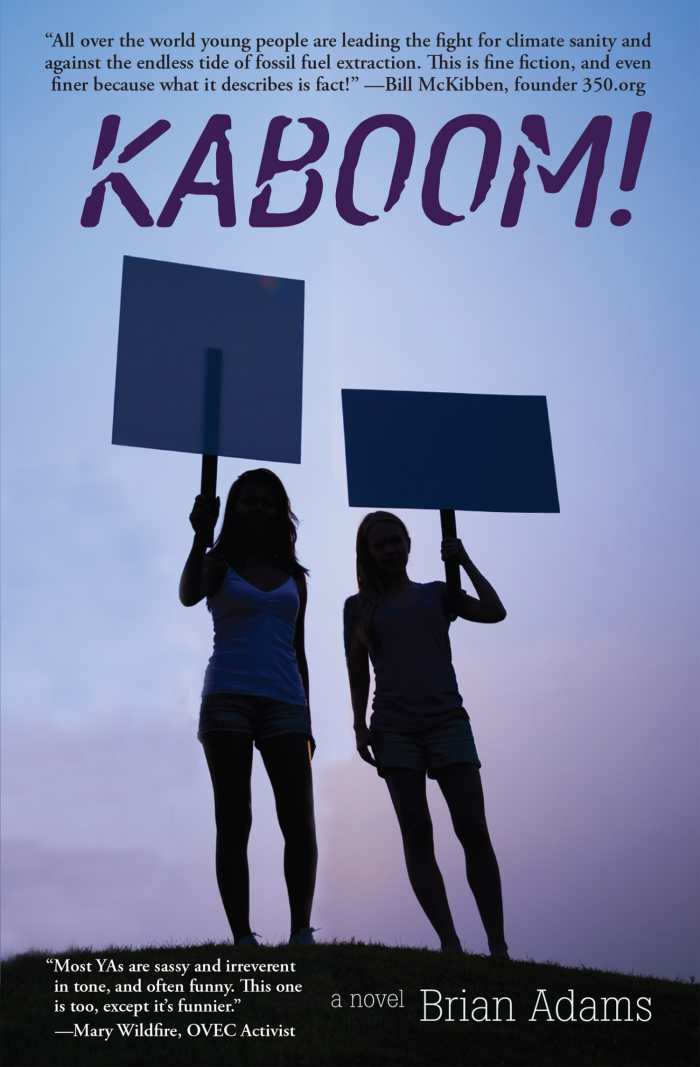
Brian Adams
Green Writers Press
Softcover $16.95 (324pp)
978-0-9962676-6-3
Buy: Local Bookstore (Bookshop)
In fifteen-year-old Cyndie’s Appalachian hometown of Greenfield, West Virginia, coal companies carry a lot of clout. When she and her best friend, Ashley, learn that mountaintop removal is planned for their beloved hangout, Mount Tom, they decide they have to do something about it. After all, they can’t bear to lose the one place in nature where they “get a good heavy dose of old-time religion”—and gossip about boys. With the help of their science teacher, Mr. Cooper, they form a new club, Kids against Blowing off Our Mountaintops (KABOOM), and get started with petitions, letter-writing, and planning a march. “I was no longer Cyndie the Invisible. I was Cyndie the Activist,” the engaging narrator marvels.
KABOOM! is retired environmental science professor Brian Adams’s second work of romantic-comic climate fiction, after Love in the Time of Climate Change (2014). The author enlists Rosa Parks, Gandhi, and Martin Luther King Jr. as historical examples of civil disobedience, and situates Cyndie and Ashley within an unexpectedly large community of fictional environmentalists—not least Cyndie’s late mother, who protested strip-mining back in the 1980s. The girls’ unlikely partners in the fight against MTR include an evangelical youth group and a quirky band of Civil War reenactors. But as Auntie Sadie, a font of folk wisdom, is fond of repeating, “Life is like a Ferris wheel.” KABOOM faces setbacks along the way, but the overall message is one of empowerment for young people. “If I can do it, then anyone can!” Cyndie insists. Adams’s surprisingly solid grasp of a teenage girl’s shifting emotions and slang vocabulary is one of the highlights of this funny and socially engaged novel.
REBECCA FOSTER (May 27, 2016)
Beatrice Bunson’s Guide to Romeo and Juliet
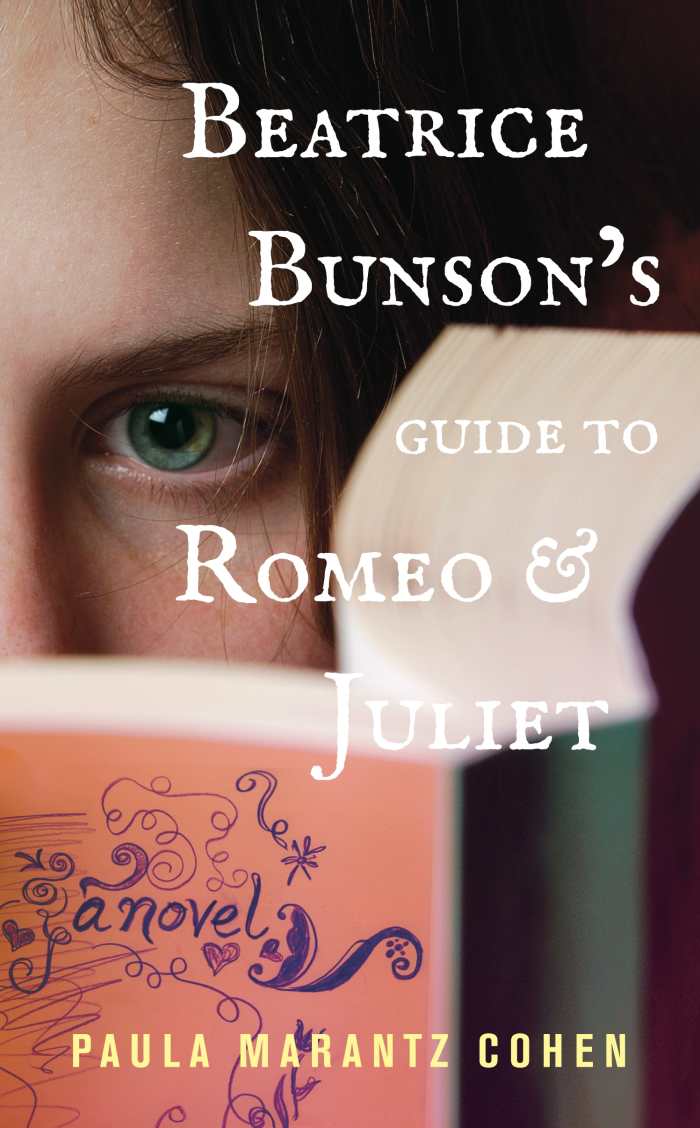
Paula Marantz Cohen
Paul Dry Books
Softcover $11.95 (200pp)
978-1-58988-105-1
Shakespeare comes to life in Drexel University English professor Paula Marantz Cohen’s first novel for young adults, Beatrice Bunson’s Guide to Romeo and Juliet. The title character, a freshman at Farley High School, is nostalgic for middle school and dreads starting her new class schedule, especially Honors English. That is, until the students meet their long-term substitute, Roger Martin, who opens the class with “let’s face it, anything by Shakespeare is kickass.” He takes them through Romeo and Juliet scene by scene, encouraging them to “savor the lines—like you’re eating a good dessert.”
To Beatrice’s surprise, the Bard has a lot to teach her about a teenager’s daily life. Now that her older sister, Jen, and her suddenly popular best friend, Nan, are both totally preoccupied with boys, she’s been feeling lonely. When her long-time crush turns out to be a creep, she looks for confidants to share her newfound love of Shakespeare. Luckily, her grandmother reads the sonnets with her at her assisted living facility and introduces her to another resident’s grandson, Haverford-bound Adam Fisher, whose conversation is peppered with SAT words.
Cohen cleverly uses the plot of Romeo and Juliet as a window onto Beatrice’s life and others’ dilemmas. Thanks to its timeless questions of class, honor, and gender roles, the play has something useful to say about everything from Twitter rumors to high school feuds. Beatrice concludes that while “reading Shakespeare didn’t exactly make you a better person … it helped you figure out what was important and what wasn’t.” Teens shouldn’t be without a copy of this sparkling novel; it will make a good companion for working through the classics.
REBECCA FOSTER (May 27, 2016)
How to Like Yourself
A Teen’s Guide to Quieting Your Inner Critic and Building Lasting Self-Esteem
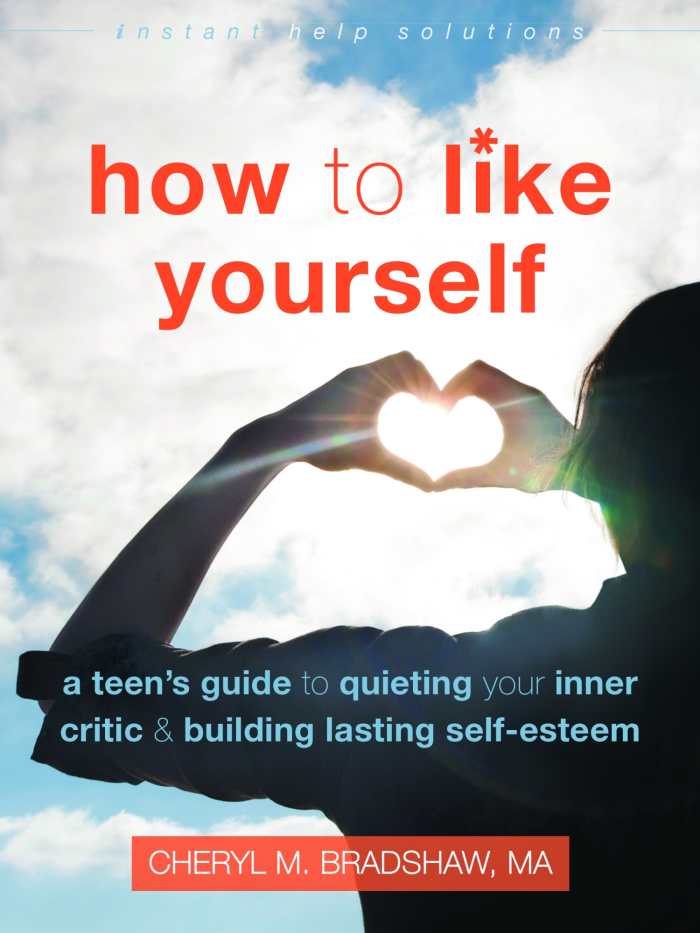
Cheryl M Bradshaw
Instant Help
Softcover $16.95 (216pp)
978-1-62625-348-3
Buy: Local Bookstore (Bookshop)
In How to Like Yourself, university counselor Cheryl Bradshaw reassures teens that they are likeable and can make meaningful connections with others simply by being themselves. According to the personal yield theory, she writes, we make the best decisions we can at any given time considering our personality and circumstances. Accepting this should help young people forgive themselves and embrace where life has taken them. Although there is a “fine line between conceit and confidence,” Bradshaw feels it is essential for teens to build self-esteem by listing their skills and talents. Another necessary step is to defeat what she playfully refers to as the “Inner Critic Know-It-All” (or “ICK”) by recognizing common thought traps like worst case scenarios, overgeneralization, an all-or-nothing approach, and emotional reasoning.
A conversational tone and plenty of real-life scenarios make this a practical handbook that will fill a unique niche in the self-help market. The 80–20 rule (“Life is 20 percent what happens to you, and 80 percent how you react”) empowers teens to see their thinking and personality as a lifetime creative project. Working with relatable examples like tackling public speaking and seeking to become more outgoing, Bradshaw gives straightforward advice on setting SMART goals and using the robot technique (stop overthinking and just do it by breaking a task into a sequence of tiny actions) to make big changes achievable.
Structured in three thematic sections—the past, the present, and the future—this heartening book emphasizes that no matter how much we change over time and how many versions of ourselves we inhabit (“Sad You,” “Angry You,” etc.), in essence we are always the same, basically likeable people.
REBECCA FOSTER (May 27, 2016)
Votes of Confidence
A Young Person’s Guide to American Elections
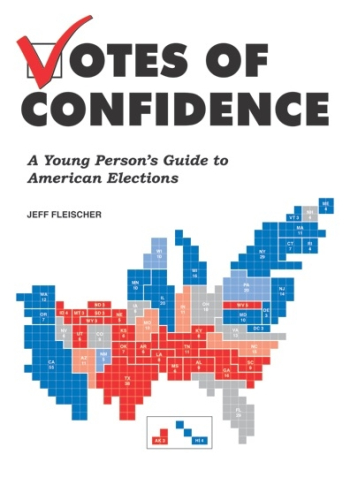
Jeff Fleischer
Zest Books
Softcover $13.99 (224pp)
978-1-936976-90-4
Even as a kid, Jeff Fleischer recalls, he was a politics nerd. Now a Chicago journalist with history books about iconic revolutionaries and instances of mass hysteria under his belt, he’s issued a timely primer on the American electoral process, Votes of Confidence. Many adults are poorly informed about the political system, he notes; only 62 percent would likely pass the US citizenship test. This book would be a perfect refresher course, then, but should also be required reading for sixteen- to eighteen-year-olds as they prepare to vote for the first time.
Fleischer covers a huge amount of information, but in such an orderly and lucid manner that it never feels overwhelming. The book starts with a quick rundown of American history from the original colonies through to the Constitution and its amendments, then moves on to discuss how the three branches of the federal government function and how laws vary between states. At every turn the author gives historical examples: the three presidents who lost the popular vote but gained the office anyway, the third parties that have been at least temporarily viable, and so on. Relevant factoids abound; for instance, Bernie Sanders “holds the record as the longest-serving independent in Congress.”
The book goes deep into the nitty-gritty of elections—voter registration, polling, campaign fundraising, volunteering opportunities, and how to find reliable, non-partisan information about candidates—yet never loses sight of the big picture. “It’s easy to be cynical” about the small role individuals play in the political process, Fleischer acknowledges, but “there’s only one solution. If more Americans become informed voters, especially young voters, they’ll be able to outnumber the uninformed ones.”
REBECCA FOSTER (May 27, 2016)
1493 for Young People
From Columbus’s Voyage to Globalization
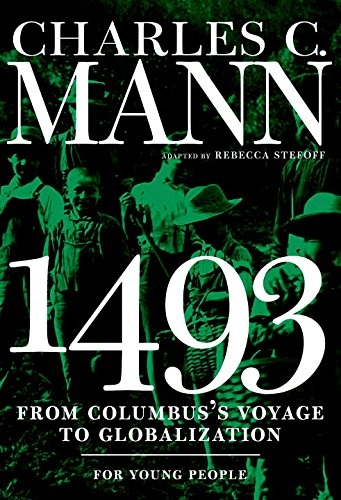
Charles C. Mann
Rebecca Stefoff
Triangle Square
Hardcover $40.00 (416pp)
978-1-60980-630-9
It all started with a visit to a garden run by local college students; seeing the colorful heirloom tomatoes, Charles Mann planted his own and began pondering how tomatoes are emblematic of New World species that spread around the globe. In his magisterial 1493, a follow-up to his award-winning 1491: New Revelations of the Americas before Columbus (2005), he traces the mass transplantation of species and peoples referred to as “the Columbian Exchange.” Columbus’s voyage linked the world like never before, Mann asserts.
From the Jamestown colony and China’s sea voyages to the rise of Mexico City, this wide-ranging history book shows how the mingling of peoples and movement of goods have had unexpected effects over the centuries. Tobacco, mosquitoes, potatoes, and rubber have all played a larger part in history than one might imagine. For instance, mosquitoes spread malaria and yellow fever via slave ships headed to Caribbean sugar plantations. The potato, that “dubious tuber” that enjoyed huge popularity in Europe, came to be so relied upon that its failure led to Ireland’s Great Hunger.
A reporter for Science, Mann is able to ground overarching theories in commonplace objects and events. Richly illustrated in color, the book also includes maps, a timeline, and a useful glossary. It ends on another revealing anecdote. The author’s grandfather, a private school headmaster, ordered a table from the Philippines; the 1950s trade in faux mahogany was largely responsible for the crumbling terraces at Ifugao, yet provided significant employment. So is globalization always negative? It’s never that simple, Mann recognizes. “In a world so interconnected, there are no easy answers,” but plenty of intriguing questions for teens to explore.
REBECCA FOSTER (May 27, 2016)
Rebecca Foster

